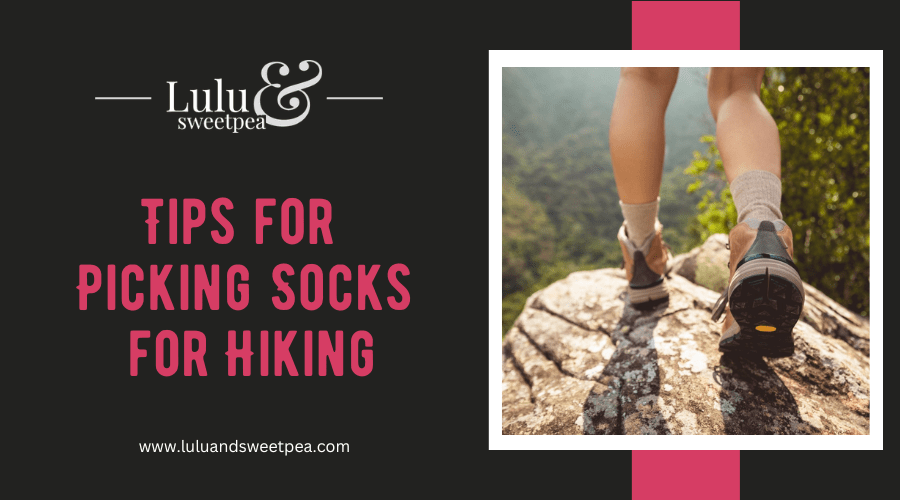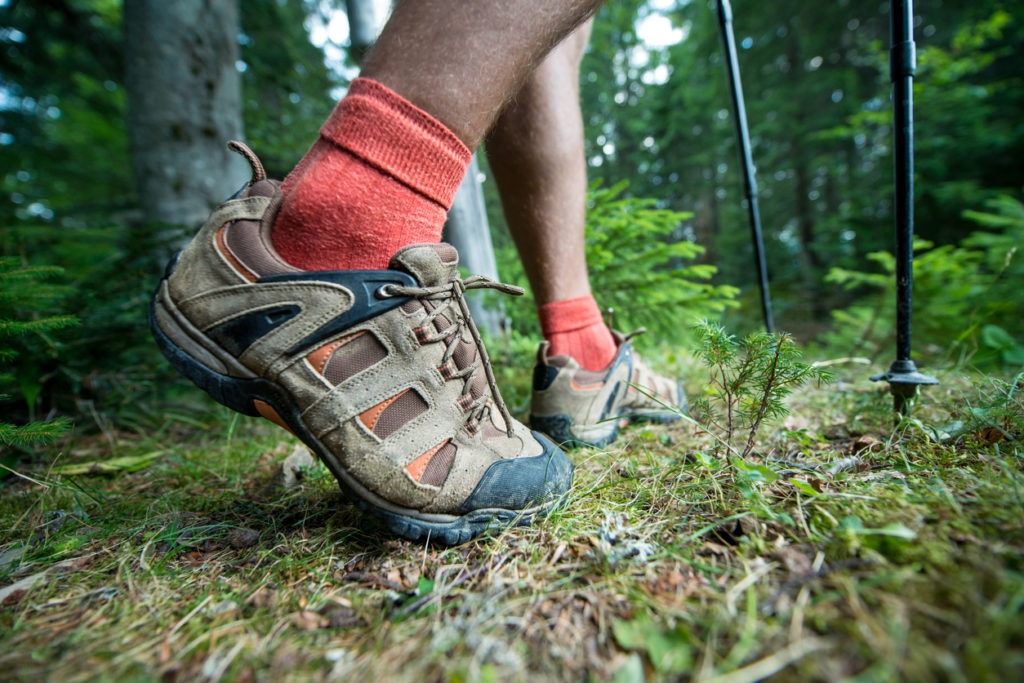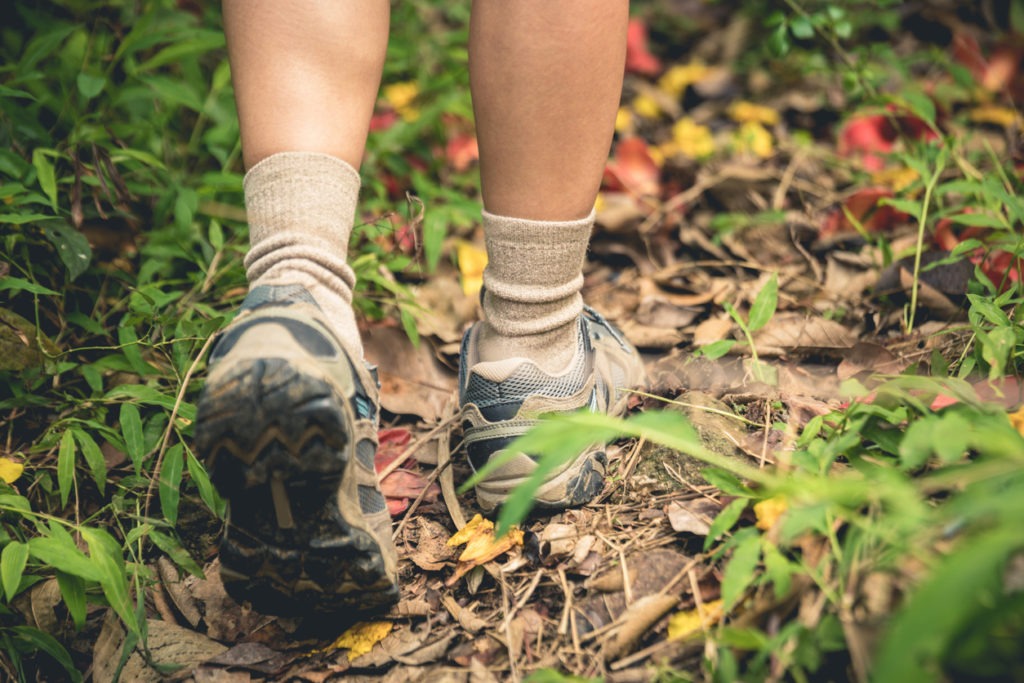The best people for hiking are those who enjoy spending time in nature. Hiking can also make some people sweat, lose weight, and keep their heart rates up. However, the best thing about hiking is that every time you summit a mountain, it makes you forget about everything else and keeps you concentrated on the trail’s numerous turns and bends.
The quality of your hiking socks can make the difference between an enjoyable and uncomfortable hike. When selecting walking socks, it’s important to take your time and think about which will best suit the type of walk and any potential weather conditions.
Why Do You Need To Wear Hiking Socks
To ensure the most comfortable hike possible, you must wear hiking socks. Hiking socks, as opposed to regular cotton socks, will prevent painful blisters from developing as your shoe rubs against the back of your foot while you walk. They also keep your feet dry, less sweaty, and cushioned.
Tips for Picking Socks for Hiking
One mile is covered in 2,000 steps on average. That number increases when you take into account the ups and downs of a hiking trail as well as the rocks and roots you’ll come across along the way. The right socks are essential to ensuring that your feet are comfortable and free from blisters on every step of your journey. It’s crucial to take these four factors into account when selecting the best hiking socks for your trip:
1. Hiking Sock Height
The proper sock height guards against abrasion from your shoes. Hiking socks come in a variety of heights, from those that barely peek out from under your shoes to those that almost reach your knees. Examine your shoes to determine the appropriate height. To prevent your skin from rubbing against your footwear directly, you want your socks to be taller the higher the cuffs on your boots or shoes are.
2. Hiking Sock Cushioning
You can estimate how thick and warm a sock will be based on how much cushioning it has. The type of trips you take and the weather you anticipate will have the biggest impact on how much cushioning you need. While high-impact activities like running and backpacking can be protected by a cushion, keep in mind that thicker socks are warmer and may make your feet perspire. It might take some trial and error to find the ideal cushion-to-warmth ratio for you. The four types of cushioning are as follows:
No cushioning
These incredibly light socks are made to be worn in warm weather. They have some padding and are very breathable. There are a few liner socks in this group that some hikers prefer to wear underneath a pair of lightweight, midweight, or heavyweight hiking socks. The ability of liner socks to wick moisture and keep feet dry made them very popular in the past, but today’s hiking socks perform well enough to eliminate the need for one. However, you can continue using liner socks if you know they are effective for you.
Light cushioning
Lightly cushioned socks that prioritize comfort and moisture-wicking over warmth are excellent for warm weather. Although they are relatively thin, they do have some light cushioning in the heel and ball of the foot, which is crucial areas.
Medium cushioning
These socks offer sufficient warmth for use in moderate to cold conditions while also offering adequate cushioning in the heel and ball of the foot for hiking and backpacking.
Heavy cushioning
These are typically the heaviest, coziest, and most cushions socks on the market. They are designed for lengthy journeys, challenging terrain, and chilly weather. They are advised for mountaineering or backpacking trips in cold weather because they are frequently too warm and thick for warm-weather trips.
3. Hiking Sock Fabric Type
Rarely are hiking socks made from a single fabric; rather, they are typically made from a blend that strikes the ideal balance between comfort, warmth, durability, and quick drying. The most typical components you’ll discover in hiking socks are as follows:
Wool
Our footwear experts strongly advise wool because it is the most well-liked hiking sock material. It provides cushioning and does a good job of controlling temperature to keep your feet from sweating. Wool’s inherent antimicrobial properties make it less likely to retain odors than synthetic fabrics, which is another benefit. Nowadays, the majority of socks are made of merino wool, which, in contrast to earlier varieties of rag wool socks, is essentially itch-free. And for better durability and quicker drying, the majority of wool socks are made from wool and synthetic material blends.
Polyester
Polyester is a synthetic fabric that wicks moisture away from the skin and dries quickly. It is occasionally combined with wool and/or nylon to produce clothing that combines warmth, comfort, durability, and quick drying.
Nylon
This is an additional synthetic choice that is occasionally utilized as the main substance. It increases tensile strength and may speed up drying.
Silk
Silk, a natural insulator, is cozy and light, but it isn’t as resilient as other materials. It occasionally serves as a reliable moisture-wicking material in sock liners.
Spandex
Many pairs of hiking socks contain a small amount of spandex. This elastic material helps socks maintain their shape and minimize bunching and creasing.
4. Hiking Sock Fit
Having proper-fitting socks will keep your feet comfortable while hiking. Your socks may have wrinkles that rub and could result in a blister if they are too big. If they are too small, pressure points and sock slippage can occur. Knowing your actual foot size rather than your shoe size will help you choose the correct size as sometimes people size up in shoes, which can result in the purchase of socks that are too big. Additionally, when you try on socks, look for a snug fit that is not too tight. The heel cup of a sock should match up with the heel of your foot for proper fit.
Conclusion
Indeed, socks are essential for hiking because they act as a barrier against blisters and tired, sweaty feet. This list will assist you in picking the ideal pair of socks for your upcoming hiking adventure that will keep your feet secure, safe, and free from blisters.



